
September 2011 Issue Highlights
For more complete coverage, send us an e-mail to
request a back
issue.

For more complete coverage, send us an e-mail to
request a back
issue.
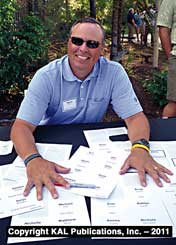
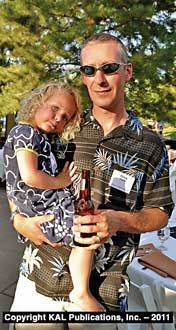
Northwest Pump Customer Appreciation Barbecue
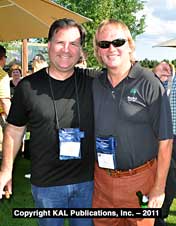
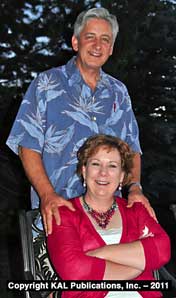
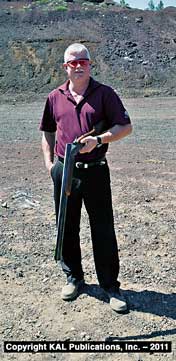
Oregon Petroleum Association Convention
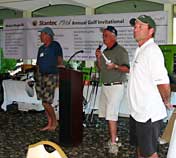
Stantec and Friends Invitational Golf Tournament
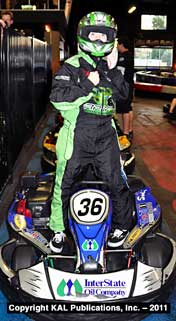
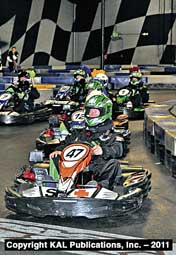
InterState Oil Race for the Wish
Want to see the photos that didn't make the issue? Check out the Cutting Room Floor.
ConocoPhillips To Split Into Two Separate
Firms
UNEV Pipeline Expected To Be Completed Soon
EPA Begins Process To End Stage II
California Bans Caffeinated Beer
What's Next for the Pacific Oil
Conference?
Shell Tops Sales In U.S., Chevron Leads The
West
HOUSTON, TX. — ConocoPhillips has announced that the company will split itself into two new public companies, one that will be involved in exploration and production and another that will be involved in refining and marketing.
In an official statement, ConocoPhillips CEO and Chairman Jim Mulva said, "We have concluded that two independent companies focused on their respective industries will be better positioned to pursue their individually focused business strategies."
Mulva himself will retire from the oil company when the transaction is completed. However, ConocoPhillips says that new, separate management teams and Boards of Directors will be put together to lead the new companies.
The current Board of Directors has already approved the separation of the company in what will be a tax-free transaction. No shareholder vote will be required to proceed with the split.
Industry analysts say that as a stand-alone company, ConocoPhillips' current refinery holdings will make them the largest independent refiner in the world.
"We really absolutely are convinced this is the right thing for our company to do, and now is the right time to do it," Mulva said in a conference call with financial analysts.
In making the announcement, Mulva said the new downstream company would focus its efforts on running only the "most competitive" refineries in the company's portfolio. He also noted that if an opportunity to sell off an asset made financial sense for ConocoPhillips, they would not wait until the split was completed to make the sale.
It has been speculated that the upstream division would keep the ConocoPhillips name. However, if that is the case, it is unknown what the name of the downstream division will be and what, if any, changes will be made to the brands currently offered by the company. ConocoPhillips currently markets under the Conoco, Phillips, and 76 brands for fuels and lubricants as well as the Kendall brand for lubricants and the Jet brand for fuel internationally.
The split is expected to be completed by the end of 2012.
SALT LAKE CITY, UT. — Construction is underway on the Utah-Nevada (UNEV) pipeline owned by HollyFrontier and Sinclair and is now expected to be operational by the end of the year.
The 400-plus mile 12 inch diameter pipeline will transport refined products from Salt Lake City, UT., to terminals in Cedar City, UT., and Las Vegas, NV. The capacity of the new line is estimated to be approximately 60,000 barrels per day.
Construction is expected to be completed by the end of October and the line is expected to be operational by the end of November. The project was delayed from its original timeline as the project sought approvals from the Bureau of Land Management; approvals for the first several sections were issued in July.
The companies also note that construction of the new terminals in Cedar City and Las Vegas "are nearing completion."
The UNEV pipeline is owned with a 75% share by HollyFrontier and a 25% share by Sinclair.
When operational, it is expected that the new pipeline will help supply issues in Cedar City and North Las Vegas, both of which are currently serviced by truck. It is also expected that, during winter months, the pipeline will increase supply in southern Nevada and lessen the area's reliance on fuels refined in California.
WASHINGTON, D.C. — The Environmental Protection Agency is proposing a waiver that would mean the end of Stage II vapor recovery requirements for much of the United States.
When the Stage II requirement was enacted nationally in 1994 for air quality "non-attainment" areas, it was designed to capture vapors emitted from gasoline during vehicle refueling. However, auto manufacturers began installing onboard vapor recovery into vehicles in 1998 and, since 2006, all new automobiles and light trucks sold in the United States have been required to have onboard vapor recovery devices installed.
Because vapor recovery equipment is now redundant — as it is both in service stations and on the vehicles themselves — the EPA is following the Obama Administration's initiative to review outdated and redundant rules and ensure that regulations are beneficial "without being unnecessarily burdensome to American businesses," according to a release from the Agency.
The EPA plans to set the date of June 30, 2013, as the official date when onboard vapor recovery achieves "widespread use" nationally; they estimate over 70% of the vehicles on the road will have onboard vapor recovery. Because of this, Stage II vapor controls would no longer be mandatory at gasoline refueling sites. Under the proposal now put forward by the agency, all Stage II requirements for all areas nationwide would be eliminated of this date.
In addition, the EPA will allow removal of Stage II requirements before June 30, 2013 if states demonstrate that widespread use has already occurred within their state.
It is expected that with the elimination of the Stage II requirement, the waiver could save individual fueling stations over $3,000 per year and save the industry $670 million over the next 10 years.
"Gasoline retailers have endured significant costs installing and maintaining Stage ll systems," said Dan Gilligan, president of the Petroleum Marketers Association of America. "Establishing a date certain gives PMAA's state associations the opportunity to begin concrete discussions with state government agencies about dismantling Stage ll."
Under the proposal released by the EPA, however, states have the option to continue with Stage II requirements after the June 30, 2013 waiver date.
Jay McKeeman, government relations director for the California Independent Oil Marketers Association, noted, "CARB [the California Air Resources Board] was questioned about how it would reach to the Federal EPA announcing 'widespread use' of on-board canisters which would alleviate the need for Stage II vapor recovery. Surprise! CARB did not believe there would be any change in California Stage II requirements, even if EPA found that a substantial amount of vehicles had perfectly adequate, equally protective on-board vapor recovery equipment." McKeeman added, "However, they continue to study the issue."
SACRAMENTO, CA. — The state of California has outlawed the sale of caffeinated beer beverages, effective as of January 1, 2012.
Under the new law, the sale of "beer to which caffeine has been directly added as a separate ingredient" has been prohibited. State Senator Alex Padilla (D), sponsored the law claiming, "Caffeinated beer beverages are a threat to public health. The added caffeine masks the effects of the high alcohol content, which can lead to binge drinking and dangerous behavior."
However, manufacturers of caffeinated beer had already complied with an FDA warning letter issued at the end of last year which stated that the beverages in their current form were a public health concern. All seven of the companies contacted by the FDA, including the manufacturers of Four Loco, Joose, Max, Core High Gravity HG, Lemon Lime Core Spiked, and Moonshot, reformulated their products and removed the caffeine last November.
In the West, Washington and Utah had already banned the sale of the caffeinated beer beverages.
The Pacific Oil Conference was organized on Oct. 11, 1959, by representatives of the Oregon Independent Gasoline Jobbers and Distributors Association, the Washington Oil Marketers Association and the California Petroleum Marketers Council, who decided upon an alliance of the three groups. In the ensuing decades, both the Arizona Petroleum Marketers Association and the Nevada Petroleum Marketers and Convenience Store Association joined forces with the POC.
As of the conclusion of the 2011 show, however, the POC is going to evolve into new management.
Ron Van de Pol, chairman of the Pacific Oil Conference, explained, "The POC will continue on after this year. After this year, CIOMA [the California Independent Oil Marketers Association] is taking the management of the show back after the conclusion of this 2011 POC. We will have a separate board, which will be appointed from CIOMA, and will work with CIOMA's executive committee."
Van de Pol continued, "The current POC Board has asked five people to step in and become the new POC Board. I will stand a second term as general chair for the transition. Myself, Mary Wilson, Brent Andrews, Jim Cross, and Angus McDonald are the acting Board for 2012. It is much more manageable size and it will be up to each board member to manage committees below them to facilitate what they need to do.
"My reason for staying on is because I know the value of the networking part of the POC," explained Van de Pol. "I agreed to stay on another year to carry forward the transition and give it a kick start so it carries on. I don't want it to stop. I'm committed to it."
He continued, "The Board members who are on the 2012 board are get-it-done people. By having a smaller board, it makes us more efficient. We've worked out our guidelines and we're trying to streamline how decisions can be made so we can make them within 24 hours."
What happens to the other four states that had been partners in the Pacific Oil Conference? According to Van de Pol, there will be a financial distribution to each state based on the bylaws of the POC — but he hopes that will not be the end of the multi-state involvement in the show. "We're still looking for input from other states, and ideas and attendance," he said. "We've told them that, going forward from 2012, we will still be in a revenue-sharing position with those states that were involved."
As for the 2012 Pacific Oil Conference, a contract has been signed to return to the Grand Sierra Resort in Reno next year.
"Where will we go after that?" asked Van de Pol. "We're looking at other what venues there may be available. We're looking anyplace that can handle the size that we are. We're thinking about changing venues from year to year or alternating venues."
He noted, "We had looked real closely at San Diego but it was limited by the size of trucks and we felt, at that point, it was essential we have trucks in our trade show. We may have backed off from that sentiment. And we found that costs for that location would be high. But that doesn't mean there aren't other properties in Southern California that have sufficient show space."
Van de Pol encouraged everyone with questions about the future of the Pacific Oil Conference to visit a special information kiosk that will be available at this year's POC. He noted that "we already have half the program elements for 2012 developed" and a lot of information will be available about next year's show for those who stop by.
"The POC has a fantastic legacy," concluded Van de Pol, "and we want it to continue to move on."
GAITHERSBURG, MD. — Shell branded stations sold more gasoline than any other brand in the country in the first quarter of 2011, according to data released by OPIS.
Shell's market share in the United States was 15.35% for the quarter.
In the West, however, volume was "dominated" by Chevron, which carried a market share of 31.8%. Nationally, in terms of price premium, Chevron led the pack. The average Chevron station priced its pumps nearly four cents per gallon above its competitors.
When looking at national figures, Chevron's market share in the first quarter fell 7.4% from the first quarter of last year to 7.36% — however, the majority of the market share declines were attributed to Chevron exiting some Southeastern markets.
In the Southwest, Shell was the volume leader, carrying 20.3% of fuel volume sold. Valero was second, followed by Exxon, Chevron and Quik Trip.
In the Rockies, Conoco's market share of 18.9% was the best, even though it was down 2% from the first quarter in 2010. Loaf & Jug saw the largest year-on-year increase of all brands whose share was greater than 2%; its market share jumped to 4.6%.
The brand with the next largest national market share was BP, which accounted for 7.95% of fuel sales. OPIS also noted that in the first quarter of 2010, the average BP station priced its pump 1.26 cts/gal above its competitors, while this year it priced 1.38 cts/gal higher.
OPIS noted of the top 10 brands with the highest market share, only Valero and Sunoco saw year-on-year increases with gains of 3.6% and 2.2%, respectively.
Originally published in the September 2011 issue of O&A
Marketing News.
Copyright 2011 by KAL Publications Inc.
Serving the 13 Western States, the World's Largest Gasoline, Oil, Fuel, TBA and Automotive Service Market